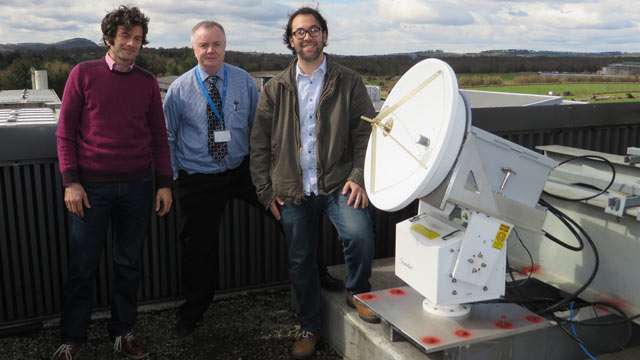Researchers assess the atmospheric absorption of higher frequency waves from a geostationary satellite

Heriot-Watt University is the only site in Scotland participating in satellite data collection as part of a landmark five-year experiment with NASA and the European Space Authority (ESA).
Researchers from Heriot-Watt together with a team from NASA have installed a satellite terminal within the university collecting transmissions from a geostationary satellite to assess the atmospheric absorption of the higher frequency waves. If Q-band communications is to be viable then reliable gateway feeds to transfer data need to be established and this is what the Heriot-Watt installation will help to record.
Dr George Goussetis, Professor of Antenna and Microwave Engineering in the University's School of Engineering and Physical Sciences, said, "Using the Q-band frequency for a wide-range of communications will rely on continuous and reliable availability. However the Q-band is a higher frequency than those currently in commercial use and that makes it more susceptible to breaking up due to weather conditions or similar.
"That's why it is likely that multiple locations are needed to ensure a continuous 'gateway' for transmission. This is the start of an experiment to discover just how reliable the Q-band might be and whether it has a commercially viable future for telecommunications companies to use."
Researchers hope that the experiment will result in higher frequencies (40 GHz, also known as Q-band) being used for future higher capacity satellite communication systems. This in turn may eventually release high bandwidth satellite links and improve broadband communication on planes, trains and other fast-moving platforms.
Provided by Heriot-Watt University





















